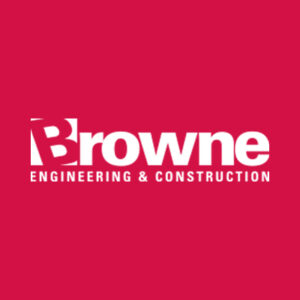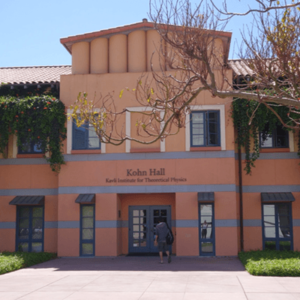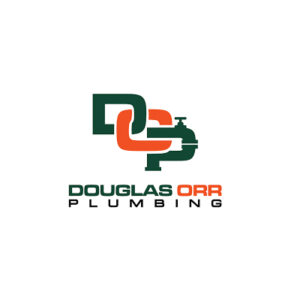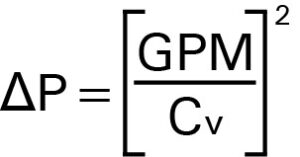CircuitSolver FAQ’s
Click on any question below to expand the answer.

CircuitSolver® is a great product - I have never used anything like it. Robert Schrieber Maintenance Manager at Embassy Suites in Brunswick, GA

It usually takes 2-3 plumbers, 2-3 days to balance a system of this size, but by using CircuitSolver® this process was done instantly. Huge savings in terms of time and effort typically devoted to the balancing process. Stephan Thompson Plumbing Contractor at E.M. Duggan Inc. in Canton, MA

I haven’t come across another product like CircuitSolver®. Once you install the valves you never have to adjust them, unlike manual balancing valves where you have to balance every single valve you install. Richard Parker Plumbing Contractor at Pan-Pacific Mechanical in Fountain Valley, CA

CircuitSolver®, being that it is an automatic balancing valve, just makes the job of balancing an intricate hot water system that much easier. David Texter Plumbing Engineer at Browne Engineering in Cincinnati, OH

By eliminating the conventional method of using fixed flow balancing valves and installing CircuitSolver® valves instead we were able to resolve our lack of hot water in some sectors of the hospital issue instantly. André Renaud Building Consultant at Mental Health University Institute of Quebec

It was taking over a minute and a half to get hot water, and now it’s down to 15-20 seconds…also a huge conservation of water…it was a fairly simply retrofit. Robert Albanese Owners Representative for The Austonian in Austin, TX

CircuitSolver® is a great product. The valves automatically adjust to changing temperatures and pressure drops unlike manual and automatic balancing valves. Plumbing Contractor Production Plus Plumbing in Vista, CA

I would tell any contractor, building engineer, and mechanical engineer if you are looking at CircuitSolver®, it is simple, it is easy to use, and it works right from the get-go. Chris Watts Plumbing Service Manager at Braconier in Denver, CO

I try to have CircuitSolver® specified on as many jobs as possible due to the simplicity of it. Eric McTee Plumbing Designer at ME Engineering in Golden, CO

We’ve used CircuitSolver®s exclusively now for several years in every application we can. Simply stated, the product is easy to install and works very well with no issues to date. Christopher Meurer Plumbing Operations Manager at J.C. Cannistraro, LLC in Boston, MA

Simply stated, CircuitSolver® valves are easy to install and work very well with no issues to date. They’re efficient and take the time typically required to manually balance systems at the end of the project out of the equation. Christopher Meurer Plumbing Operations Manager at J.C. Cannistraro, LLC in Boston, MA

Using CircuitSolver® makes balancing the system so easy. The valves automatically adjust themselves, so you don’t have to check each valve once installed, and there are never any callbacks for issues. Arturo Hernandez GJM Engineering in Los Angeles, CA

When we install CircuitSolver® valves, it corrects the client’s hot water circulation problems, and everything operates as it’s designed. We are going to keep installing them. Jason Putnam Project Manager at Douglas ORR Plumbing in Miami Springs, FL

CircuitSolver® valves are efficient and take the time typically required to manually balance systems at the end of the project out of the equation. We have started up systems in the afternoon to come in the next morning to find hot water perfectly balanced throughout all risers and zones. Christopher Meurer Plumbing Operations Manager at J.C. Cannistraro, LLC in Boston, MA

What an awesome little device these guys make. It’s a no-brainer. Andy Crossland Principal Mechanical Engineer at Crossland Engineering LLC in Honolulu, HI

CircuitSolver® is a game changer in balancing DHWS and I would definitely use it as a standard in future projects. Matt Trevino Plumbing Engineer at DBR Engineering in San Antonio, TX

CircuitSolver® is a great product - I have never used anything like it. Robert Schrieber Maintenance Manager at Embassy Suites in Brunswick, GA

Rittenhouse Hill Apartments - We had a very complicated apartment restoration involving 47 risers. CircuitSolver® saved a lot of time, installed easily, used smaller recirculation pumps to save energy & wear, and continues performing well. Ron Miller President at Adelphia Plumbing in Philadelphia, PA
The University of South Florida - On startup of this install, the system automatically balanced itself in under 3 hours, all without manual labor thanks to CircuitSolver®. The plumbers actually went out a did another job, went to breakfast, and when they came back, the system was balanced. Mike Bishop V.P. of Engineering at RGD Consulting Engineers in Jupiter, FL

Right after the installation the general manager went around the building and there was a noticeable difference with quick delivery of hot water. Andy Crossland Principal Mechanical Engineer at Crossland Engineering LLC in Honolulu, HI

Before CircuitSolver®, we would have wait times between 5-7 minutes for hot water on the higher floors. Since we have installed CircuitSolver® valves, we are getting hot water when we need it and have not had a single complaint. Robert Schrieber Maintenance Manager at Embassy Suites in Brunswick, GA

CircuitSolver® makes the initial startup so easy. When we turned it on, the valves balanced the whole system without us having to make any adjustments. We never have any issues when installing them in our projects. Plumbing Contractor Production Plus Plumbing in Vista, CA

The advantages of the system are an efficiently balanced system, saving time testing and balancing the system, lower utility bills and reduced water usage. Luke Holding Project Engineer at The Beck Group in Dallas, TX

USC Villages Student Housing - By using CircuitSolver®valves, we saved time and money by not having to balance the system or make any adjustments. It made the process much easier and smoother. Richard Parker Plumbing Contractor at Pan-Pacific Mechanical in Fountain Valley, CA

CircuitSolver® was able to automatically balance the system when engineers could not. Mark Wilmink MarkCo Plumbing in Florence, KY

CircuitSolver® makes balancing the system so easy. We don’t have to manually set each line or make any adjustments. We have had absolutely no balancing issues since we started up the system. Richard Parker Plumbing Contractor at Pan-Pacific Mechanical in Fountain Valley, CA

The Da Vinci Project - By using CircuitSolver® balancing valves, we were able to save both time and money. The start-up process was much faster by not having to manually adjust each valve. After installation, the system balanced itself and required no maintenance. Arturo Hernandez GJM Engineering in Los Angeles, CA

